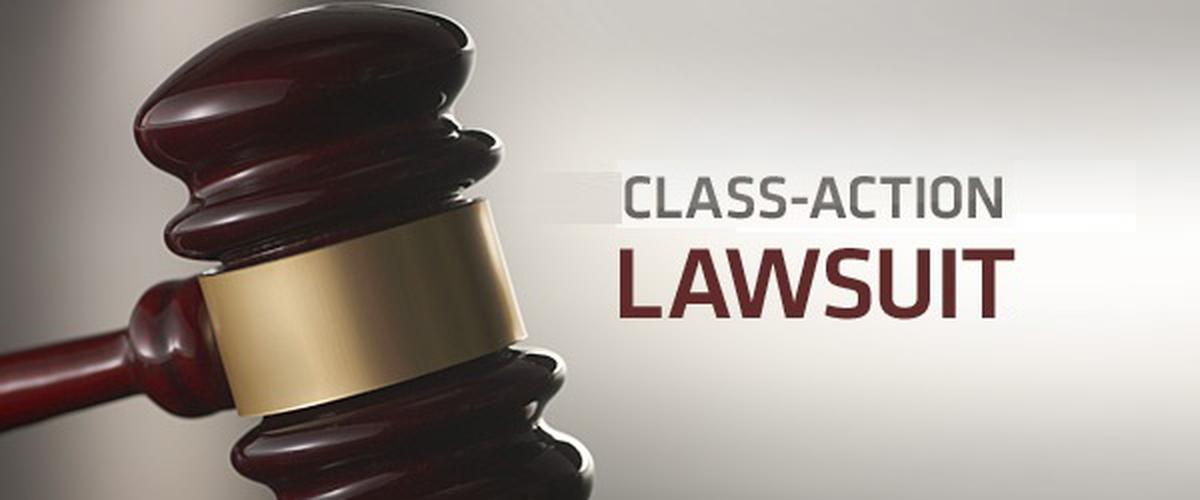Lawful Campaigning For Revealed: Your Go-To Resource for Class Action Lawsuit Info
Lawful Campaigning For Revealed: Your Go-To Resource for Class Action Lawsuit Info
Blog Article
Understanding Course Activity Legal Action: A Guide for Attorney
Class action suits have actually become an important part of the legal landscape, enabling for the loan consolidation of numerous cases right into a solitary action. By delving right into the details of class action legal actions, this overview furnishes attorneys with the expertise and devices needed to successfully navigate this complicated area of legislation.
The Essentials of Class Action Legal Actions
Class activity claims are a lawful mechanism utilized to combine similar insurance claims from a team of people into a single lawsuit, giving a affordable and effective strategy to seeking justice and resolution. This kind of legal action allows a representative plaintiff, acting on behalf of the entire class, to bring an insurance claim versus an offender who has presumably triggered damage or went against the civil liberties of multiple people.
The basic requirements for bringing a class action lawsuit include numerosity, commonness, typicality, and competence of depiction. Numerosity refers to the fact that the course should be so big that joinder of all participants would be unwise. Commonality implies that there must prevail questions of law or fact that are shared by all members of the course. Typicality needs that the insurance claims of the representative plaintiff are typical of the claims of the whole course. Competence of representation makes sure that the depictive plaintiff will properly represent the passions of the whole course.
Class activity legal actions can be useful for both offenders and plaintiffs. For complainants, it enables them to pool their sources and share the dangers and expenses related to lawsuits. It likewise provides a degree playing field when they are up versus big corporations or entities. For offenders, it offers the opportunity to successfully deal with numerous insurance claims in a solitary suit, avoiding the requirement to protect versus various specific claims.
Identifying and Assessing Potential Class Members
After developing the fundamental demands for a course activity lawsuit, the next step is to identify and assess potential course participants. This procedure includes identifying that might become part of the course and examining their cases to determine if they satisfy the essential criteria.
To identify prospective course participants, attorneys typically conduct comprehensive study and gather relevant details. This might entail examining records, conducting meetings, and checking out documents to determine individuals or entities that may have been impacted by the alleged wrongdoing. It is crucial to develop a detailed and clear checklist of potential class participants to ensure that all affected celebrations are included in the suit.
Once possible class participants have been identified, the following step is to assess their cases. This includes assessing the merits of each specific insurance claim to identify if they fulfill the legal needs for class qualification. Lawyers have to thoroughly examine the facts, proof, and lawful theories of each prospective course member's claim to guarantee that they have a sensible case.
Examining potential class participants also includes establishing whether they meet the class meaning and have endured similar harm as a result of the accused's activities. This calls for comparing the truths and situations of each prospective course member's scenario to the claims and legal concepts put forth in the claim.
Browsing the Course Accreditation Refine
To effectively browse the class accreditation procedure, legal representatives must vigilantly stick to the step-by-step demands established forth by the court. Course qualification is an essential step in a course activity lawsuit, as it identifies whether a situation can proceed as a class activity, representing a group of people that have comparable cases versus an accused. The process includes satisfying particular requirements, such as numerosity, commonality, typicality, and competence of depiction.
To start with, legal representatives need to develop numerosity by demonstrating that the class is so large that specific joinder is impractical. This can be attained through evidence or professional statement. Secondly, they must develop commonness by revealing that there are common inquiries of regulation or truth that predominate over private issues. This requires a comprehensive evaluation of the insurance claims and defenses included.
Next, legal representatives should reveal typicality, which indicates that the representative plaintiff's insurance claims are typical of the cases of the class participants. This makes certain that the passions of the representative complainant align with the passions of the class. Legal representatives should show adequacy of representation, suggesting that the depictive plaintiff and their advice will fairly and effectively stand for the passions of the class.
To browse this procedure successfully, lawyers have to thoroughly prepare by conducting considerable research, gathering proof, and developing a compelling disagreement that pleases each of these standards. They should likewise be prepared to reply to any difficulties or arguments raised by the accused. By diligently adhering to the procedural requirements set forth by the court, attorneys can boost their opportunities of obtaining class accreditation and advancing the rate of interests of the class participants.

Trick Strategies for Handling Course Action Litigation
Upon effectively browsing the class accreditation procedure, legal representatives have to then carry out vital techniques for successfully taking care of class activity lawsuits. These strategies are important to make certain that the case proceeds smoothly and successfully, ultimately taking full advantage of the opportunities of a favorable outcome for the course members.
One key method is to develop a natural and strong legal team (Class action lawsuit). This includes setting up a team of attorneys with experience in class action litigation, as well as other relevant areas such as the certain sector or topic associated with the instance. A versatile group can bring various perspectives and abilities to the table, boosting the total performance of the lawsuits
One more vital technique is to create a well-balanced and extensive lawsuits plan. This plan ought to outline the overall objectives of the case, along with the certain legal theories and arguments that will be gone after. It ought to also consist of a timeline and budget plan to guarantee that the case stays on track and within the designated resources.
In addition, legal representatives ought to actively involve with the class members throughout the lawsuits process (Class action lawsuit). This consists of supplying routine updates on the development of the situation, seeking input and comments from the class participants, and attending to any questions or worries they may have. By cultivating open communication and partnership, lawyers can construct count on and assistance among the course members, which can be critical in accomplishing an effective resolution
Clearing Up Class Activity Lawsuits: Settlement and Authorization
When it comes to clearing up class action legal actions, effective settlement and acquiring approval are essential steps in accomplishing a resolution. Course action legal actions are complex and involve a lot of complainants, making it essential to get to a settlement that is reasonable and acceptable to all parties included.

Once a negotiation contract is reached, it needs to be accepted by the court. The court's duty in this procedure is to make certain that the negotiation is reasonable, practical, and sufficiently secures the rate of interests of the course participants. The court will certainly think about variables such as the nature of the claims, the toughness of the evidence, the potential recuperation for the class members, and any objections raised by course members.
Acquiring court approval is important as it supplies finality to the settlement and safeguards the interests of the class members. It ensures that the negotiation is binding and enforceable, and course members can receive their rightful compensation.
Final Thought

Course action legal actions have come to be an integral component of the legal landscape, permitting for the loan consolidation of several claims right into a single activity. Class qualification is an important step in a class activity claim, as it identifies whether an instance can proceed as a course action, representing a team of individuals who have comparable claims versus an offender. By carefully sticking to the procedural demands established forth Class action lawsuit by the court, attorneys can raise their chances of acquiring course certification and progressing the rate of interests of the course participants.
The court will think about variables such as the nature of the claims, the strength of the evidence, the possible recuperation for the class members, and any type of arguments elevated by course participants.
By identifying and examining possible course members, lawyers can establish the practicality of a class activity legal action.
Report this page